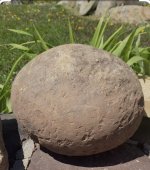Phanntom
Full Member
- Oct 21, 2012
- 144
- 42
- Detector(s) used
-
Whites 6000di Pro SL
Whites Goldmaster II vSat
Whites Prizim 6T
- Primary Interest:
- All Treasure Hunting
I'm hoping I'm not biting off more than I can chew. I'm in South Carolina, in the low country and while doing some research at the local library came across an 1825 county map. It shows an old stagecoach road nearby so decided to spend some time looking for it. I did manage to find it, now I have a problem with how to approach hunting it. Friday afternoon I walked about 3 miles of it. I didn't see anything that looked like any cabin or stage stop where I feel I'm more likely to have a chance of finding anything. It only makes sense that the chances of something being dropped is greater where people congregated at a break in their travels, than just a road they traveled over. There was no reference on the map that showed any stage stops. This might be because the stretch I'm covering is only about two miles from the town, so the stop-over was probably in the town. If I can follow the road from end to end, it likely covers something between two and two hundred fifty miles.
Does anyone know an approximate distance stage stops were apart? I know 20 miles was considered a days travel, but they likely would've broke to rest or change horses in shorter distances than that. If I can learn that I can probably figure out likely spots to check for stops by starting at one of the terminus'.
When I located the map and saw the stage road on it, and then found it I was excited...now it's seeming like a daunting task. I fooled around with my detector while I was walking it and it was silent detecting. I think it only went off twice. In all-metal mode, I managed a clad penny, a small split-shot lead sinker and another what appeared to be a larger sinker....mostly it was just quiet.
If anyone has any ideas of how to approach this hunt I'm sure open to ideas.
Does anyone know an approximate distance stage stops were apart? I know 20 miles was considered a days travel, but they likely would've broke to rest or change horses in shorter distances than that. If I can learn that I can probably figure out likely spots to check for stops by starting at one of the terminus'.
When I located the map and saw the stage road on it, and then found it I was excited...now it's seeming like a daunting task. I fooled around with my detector while I was walking it and it was silent detecting. I think it only went off twice. In all-metal mode, I managed a clad penny, a small split-shot lead sinker and another what appeared to be a larger sinker....mostly it was just quiet.
If anyone has any ideas of how to approach this hunt I'm sure open to ideas.
Upvote
0





